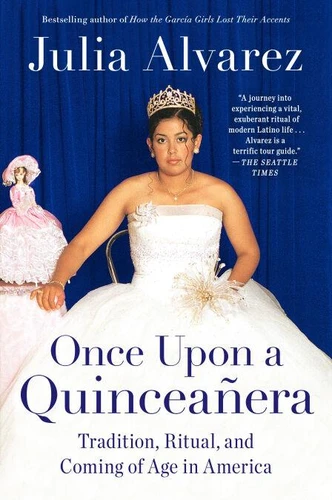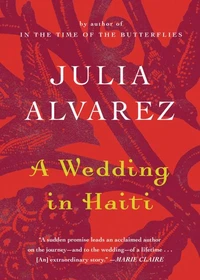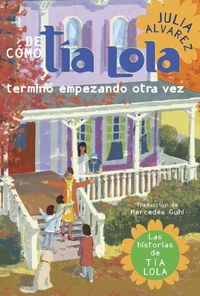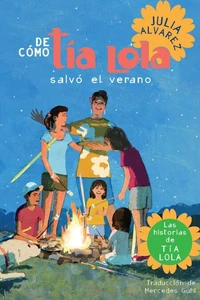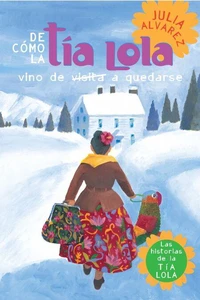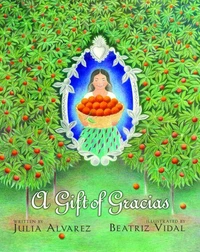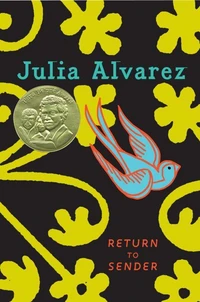Once Upon a Quinceanera. Coming of Age in the USA
Par :Formats :
Disponible dans votre compte client Decitre ou Furet du Nord dès validation de votre commande. Le format ePub protégé est :
- Compatible avec une lecture sur My Vivlio (smartphone, tablette, ordinateur)
- Compatible avec une lecture sur liseuses Vivlio
- Pour les liseuses autres que Vivlio, vous devez utiliser le logiciel Adobe Digital Edition. Non compatible avec la lecture sur les liseuses Kindle, Remarkable et Sony
- Non compatible avec un achat hors France métropolitaine
 , qui est-ce ?
, qui est-ce ?Notre partenaire de plateforme de lecture numérique où vous retrouverez l'ensemble de vos ebooks gratuitement
Pour en savoir plus sur nos ebooks, consultez notre aide en ligne ici
- Nombre de pages288
- FormatePub
- ISBN978-1-101-21340-7
- EAN9781101213407
- Date de parution02/08/2007
- Protection num.Adobe DRM
- Taille721 Ko
- Infos supplémentairesepub
- ÉditeurPlume
Résumé
Finalist for the National Book Critics Circle Award, a "phenomenal, indispensable" (USA Today) exploration of the Latina "sweet fifteen" celebration, by the bestselling author of How the García Girls Lost Their Accents and In the Time of Butterflies The quinceañera, a celebration of a Latina girl's fifteenth birthday, has become a uniquely American trend. This lavish party with ball gowns, multi-tiered cakes, limousines, and extravagant meals is often as costly as a prom or a wedding.
But many Latina girls feel entitled to this rite of passage, marking a girl's entrance into womanhood, and expect no expense to be spared, even in working-class families. Acclaimed author Julia Alvarez explores the history and cultural significance of the "quince" in the United States, and the consequences of treating teens like princesses. Through her observations of a quince in Queens, interviews with other quince girls, and the memories of her own experience as a young immigrant, Alvarez presents a thoughtful and entertaining portrait of a rapidly growing multicultural phenomenon, and passionately emphasizes the importance of celebrating Latina womanhood.
But many Latina girls feel entitled to this rite of passage, marking a girl's entrance into womanhood, and expect no expense to be spared, even in working-class families. Acclaimed author Julia Alvarez explores the history and cultural significance of the "quince" in the United States, and the consequences of treating teens like princesses. Through her observations of a quince in Queens, interviews with other quince girls, and the memories of her own experience as a young immigrant, Alvarez presents a thoughtful and entertaining portrait of a rapidly growing multicultural phenomenon, and passionately emphasizes the importance of celebrating Latina womanhood.
Finalist for the National Book Critics Circle Award, a "phenomenal, indispensable" (USA Today) exploration of the Latina "sweet fifteen" celebration, by the bestselling author of How the García Girls Lost Their Accents and In the Time of Butterflies The quinceañera, a celebration of a Latina girl's fifteenth birthday, has become a uniquely American trend. This lavish party with ball gowns, multi-tiered cakes, limousines, and extravagant meals is often as costly as a prom or a wedding.
But many Latina girls feel entitled to this rite of passage, marking a girl's entrance into womanhood, and expect no expense to be spared, even in working-class families. Acclaimed author Julia Alvarez explores the history and cultural significance of the "quince" in the United States, and the consequences of treating teens like princesses. Through her observations of a quince in Queens, interviews with other quince girls, and the memories of her own experience as a young immigrant, Alvarez presents a thoughtful and entertaining portrait of a rapidly growing multicultural phenomenon, and passionately emphasizes the importance of celebrating Latina womanhood.
But many Latina girls feel entitled to this rite of passage, marking a girl's entrance into womanhood, and expect no expense to be spared, even in working-class families. Acclaimed author Julia Alvarez explores the history and cultural significance of the "quince" in the United States, and the consequences of treating teens like princesses. Through her observations of a quince in Queens, interviews with other quince girls, and the memories of her own experience as a young immigrant, Alvarez presents a thoughtful and entertaining portrait of a rapidly growing multicultural phenomenon, and passionately emphasizes the importance of celebrating Latina womanhood.

